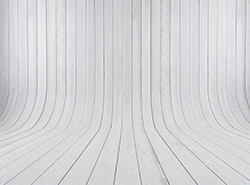
- تاریخ انتشار : ۱۳۹۶
- ناشر : سومین کنفرانس بین المللی پژوهش های نوین در عمران,معماری و شهر سازی
- زبان مقاله : همه
- تعداد صفحات : 9
- حجم فایل : 0 کیلوبایت
- نوع مقاله : مجموعه مقالات کنفرانس
- مجموعه : مهندسی معماری
چکیده مقاله
In Islamic architecture, shrines and religious monuments possess a privileged position after mosques. Iranians have long been familiar with the principals of constructing tombs and respected their nobles and dignified people at all times; thus, they constructed tombs and mausoleums in order to immortalize names of their nobles and dignified people. Tombs represent some aspects of civilization and even the culture of ancient country of Iran as well. The architectural peak of monuments in Iran, began from the Seljuk period. Since, in this era architects created tombs, in various ways and in various designs mostly based on their past experiences which was influenced by various architectural styles and methods. The current study investigates, history and architecture of the tombs of Segonbad1, located in the center of West Azerbaijan province, i.e. Urmia. At the entrance of the structure, there exist three embedded Kufic inscriptions carved from stone. At the ending lines of the inscription, a carved date as “Muharram of 580 AH” explicitly represents that the brick tower or the tombs date back to the sixth century. According to the inscription, the building is constructed by the order of, “Shishqat Almozafari” an emir (ruler) of the Seljuk and its architect had been a man named “Mansour bin Moussa”. From the architectural points of view, the present structure has a very keen similarity with the tombs of the 6th century - especially tombs in Maragheh and other tombs belonging the Seljuk period. The most important characteristic of this structure is that, there are two decorative form in the northern side, contains Muqarnas2, Girih Tiling3 and Kufi cornices representing the name of sponsor and constructor. The results of the study suggest that foundation of the tomb was made with stones, mortar, sand, and lime; besides, the material used in the construction of the building includes bricks and stones. The next important case about the current construction is, its interior plan and the grave room made in square shape which epitomizes the ability and skill of its architect in embedding a square room inside a cylindrical tower.
نحوه استناد به مقاله
در صورتی که می خواهید به این مقاله در اثر پژوهشی خود ارجاع دهید، می توانید از متن زیر در بخش منابع و مراجع بهره بگیرید :
Manouchehr Eskandarzadeh.1؛Babak Vandnorouz.2؛ ۱۳۹۵، A Case study on the architectural characteristics of Se Gonbad Monument, Urmia، سومین کنفرانس بین المللی پژوهش های نوین در عمران,معماری و شهر سازی، https://scholar.conference.ac:443/index.php/download/file/8137-A-Case-study-on-the-architectural-characteristics-of-Se-Gonbad-Monument,-Urmia
در داخل متن نیز هر جا به عبارت و یا دستاوردی از این مقاله اشاره شود پس از ذکر مطلب، در داخل پرانتز، مشخصات زیر نوشته شود.
(Manouchehr Eskandarzadeh.1؛Babak Vandnorouz.2؛ ۱۳۹۵)
